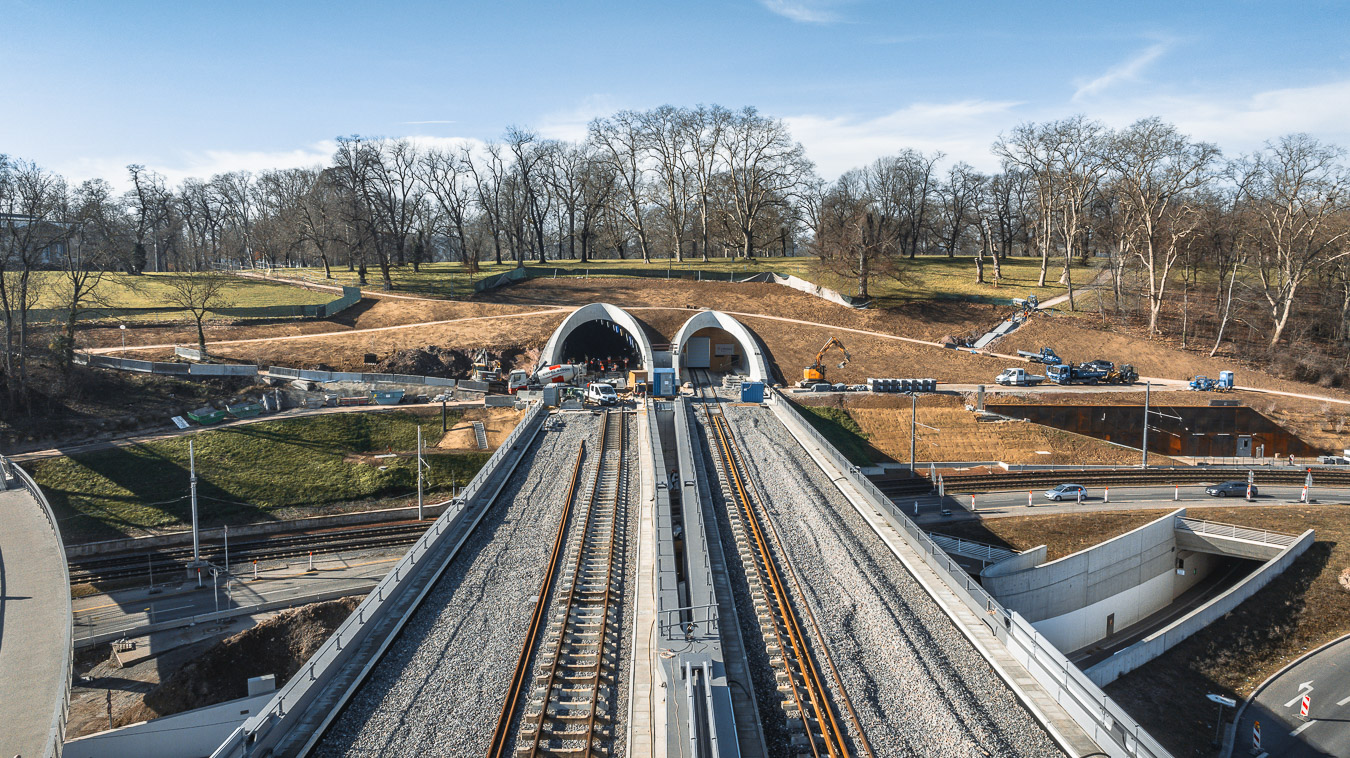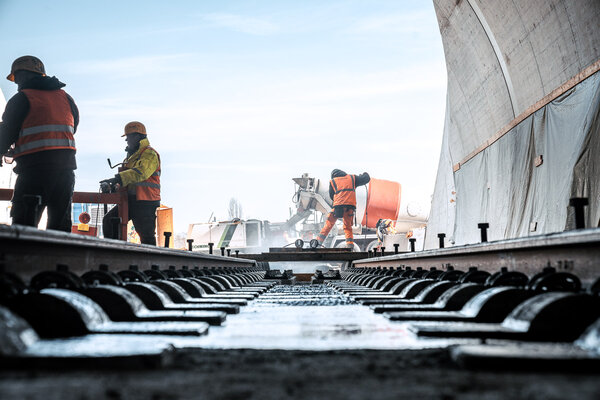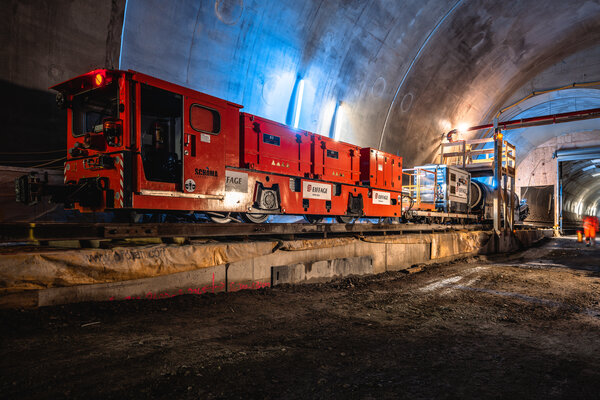As part of the major Stuttgart 21 project, the entire railway structure in the Stuttgart conurbation is being redesigned. The main focus is on converting the existing main terminus station into an underground through station. The remodelling of the centrally located main station means that the previous stabling station in Stuttgart's Rosenstein district has to make way. The future stabling station in Untertürkheim will replace it via a tunnel ring system.
As part of this contract, 14,000 metres of Rheda 2000 slab track system, 6 points, 1,100 m of mass spring system and the 50 Hz systems will be installed in the Feuerbach and Bad Cannstatt tunnels in the Stuttgart 21 project.
A special surface for wheeled vehicles will be installed in the tunnels using a system patented by Wittfeld.
The calculation team of the structural engineering team of Eiffage Infra-Nordwest (formerly Wittfeld) led this project to the contract with a great deal of perseverance and commitment. A major contract for the ‘ARGE Eiffage FF1’ of Eiffage-Infra Bau.
Milestones:
2024
Update from Stuttgart: Bridge safety next level! Our team is currently renewing the piers of a pedestrian bridge. Why? There used to be a marshalling yard there, today trains race past at 160 km/h! The bridge therefore urgently needs modern impact protection. We used a special method to remove the pillars without disturbing noises: Instead of chisel hammers, diamond saws were used to precisely cut off the piers. After sawing off the old piers, they were loaded and new piers were poured! To ensure that the bridge remains safe during the reconstruction, we erected additional load towers to support the superstructure. This will remain stabilised for 28 days before the new structure is fully loaded. The new piers are designed to withstand possible impact forces - this is how we ensure long-term stability and safety.
2023
An important milestone in the Stuttgart 21 project has been finalised by our team: The last metres of the slab track were concreted. The daily installation rate is 100-120 metres per day - a great achievement by our team! Our service package includes not only the construction of the ballastless track, but also the construction of the 50hz technology, the telecommunications technology and the construction of the cable duct in the Feuerbach and Cannstatt tunnels and the new S-Bahn tunnel. A particular highlight is the Heilbronner Straße smoke extraction structure. It has a height of 40 metres, is 6.20 metres in diameter and medium-voltage cables, low-voltage cables and fibre optic cables for operating the smoke extraction technology run in this shaft. We install the cable routes with the appropriate fire protection panelling here, and several smoke extraction structures have to be built so that the tunnel and Stuttgart Central Station can be mechanically ventilated in the event of a fire. These are connected to ventilation shafts, which are connected to the tunnel tubes via ventilation tunnels. The structures consist of a mainly underground operating and ventilation building, two 5 metre high above-ground exhaust chimneys and a stairwell.
Concrete railway in the Feuerbach tunnel
The concreting of the Feuerbach tunnel has been successfully completed.
The slab track, which we concreted from the Feuerbach tunnel to the main railway station, has now been successfully completed and can be put into operation. A 750mm narrow-gauge railway was installed in Stuttgart to transport the in-situ concrete for the track support slab. This had the advantage that everything could be transported on the existing, only 1.40m wide cornice that was available for the concrete logistics. The interesting thing about this construction phase was our concrete train, which consists of a battery-powered locomotive. The braking energy generated by the tunnel gradient is fed back into the battery for charging. Another advantage of the locomotive is the electric drive and a remote control that can be used to control the locomotive. No gearbox was installed so that the locomotive can move forwards and backwards with centimetre precision when concreting. The time frame for the track section was adhered to and this construction phase was completed at the end of January.


 DE
DE
 SWE
SWE




